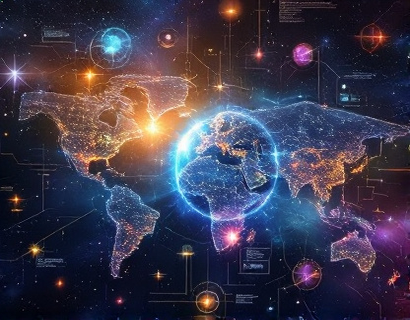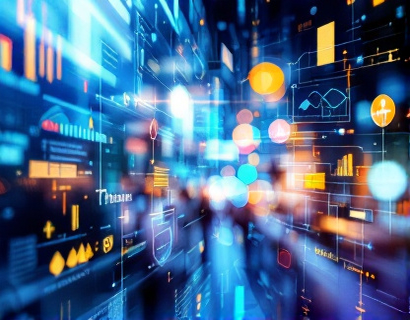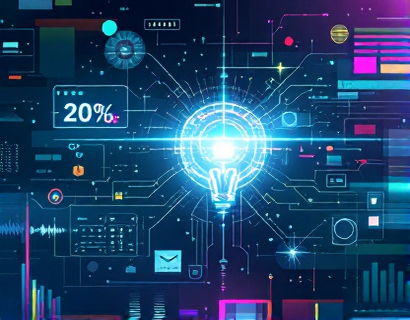Unleashing Digital Transformation: Harnessing the Power of Crypto and AI for Enhanced Ecosystem Solutions
The digital landscape is undergoing a profound transformation, driven by the convergence of cryptocurrency and artificial intelligence. This synergy is not just a technological curiosity but a powerful force reshaping how we interact with digital ecosystems. The integration of these two cutting-edge technologies offers unprecedented opportunities for enhancing user connectivity, driving growth, and improving satisfaction within the tech ecosystem. This article explores the latest innovations at the intersection of crypto and AI, highlighting their potential to revolutionize digital experiences.
The foundation of this transformation lies in the unique properties of cryptocurrency. Unlike traditional currencies, cryptocurrencies operate on decentralized blockchain networks, ensuring transparency, security, and immutability. These characteristics make them ideal for creating trustless environments where users can transact without intermediaries. In the context of digital ecosystems, this means more direct and efficient interactions between users and services, reducing costs and increasing accessibility.
Artificial intelligence, on the other hand, brings the power of machine learning and advanced analytics to the table. AI can process vast amounts of data to uncover patterns, predict trends, and automate complex tasks. When combined with the decentralized and secure nature of cryptocurrency, AI can enhance the functionality and user experience of digital ecosystems in several ways.
Enhancing User Connectivity
One of the most significant impacts of merging crypto and AI is the enhancement of user connectivity. Traditional digital platforms often struggle with user verification and identity management, leading to fragmented experiences and security concerns. Blockchain technology, powered by AI, can streamline this process through decentralized identity solutions. These solutions allow users to control their digital identities, ensuring privacy while maintaining security.
Smart contracts, self-executing contracts with the terms directly written into code, can automate and enforce agreements between users and services. AI can optimize these smart contracts by analyzing user behavior and preferences, ensuring that the terms are fair and adaptive. This not only improves trust but also fosters a more connected and cohesive user base.
Moreover, AI-driven recommendation systems can leverage blockchain to create transparent and unbiased suggestions. By removing the influence of centralized entities, these systems can provide users with more accurate and personalized content, enhancing their overall experience and engagement.
Driving Growth Through Decentralized Economies
The integration of crypto and AI is also revolutionizing how digital ecosystems grow and monetize. Decentralized economies, powered by cryptocurrencies, offer new models for value creation and distribution. These economies can incentivize users to contribute to the ecosystem, whether through content creation, data sharing, or platform maintenance.
AI plays a crucial role in managing and optimizing these decentralized economies. Machine learning algorithms can analyze market dynamics, predict demand, and adjust token economics in real-time. This ensures that the ecosystem remains balanced and sustainable, attracting more users and developers.
Tokenization, the process of converting assets into tokens on a blockchain, is another area where crypto and AI intersect. AI can assess the value of various assets and determine the optimal token structure, making it easier for users to participate in and benefit from the ecosystem. This not only increases liquidity but also opens up new investment opportunities for a broader audience.
Improving User Satisfaction with Intelligent Services
User satisfaction is a critical factor in the success of any digital ecosystem. The combination of crypto and AI can significantly enhance the quality of services offered, leading to higher user satisfaction. AI-powered chatbots and virtual assistants can provide 24/7 support, handling queries and issues with human-like efficiency and empathy. These AI-driven tools can also learn from user interactions, continuously improving their performance and personalization.
Furthermore, AI can optimize backend operations, ensuring that services are delivered seamlessly and efficiently. By analyzing user data, AI can identify bottlenecks and areas for improvement, allowing developers to make data-driven decisions. This results in faster load times, better performance, and a more reliable user experience.
Crypto-based rewards systems can further enhance user satisfaction by incentivizing desired behaviors. For instance, users can earn tokens for engaging with content, referring friends, or contributing to the ecosystem. These tokens can be redeemed for various benefits, creating a positive feedback loop that encourages active participation and loyalty.
Security and Trust in Digital Transactions
Security is a paramount concern in the digital age, and the fusion of crypto and AI addresses this challenge head-on. Blockchain's inherent security features, combined with AI's advanced threat detection capabilities, create a robust defense against cyber threats. AI can monitor network activity in real-time, identifying and mitigating potential security breaches before they occur.
Smart contracts, when audited and enhanced with AI, can ensure that transactions are executed as intended, reducing the risk of fraud and errors. This level of security builds trust among users, encouraging more widespread adoption of digital ecosystem services.
Moreover, the transparency provided by blockchain allows users to verify transactions and interactions, fostering a sense of trust and accountability. AI can further enhance this by providing clear and understandable explanations of complex transactions, demystifying the process for users and increasing their confidence in the system.
Innovative Use Cases and Future Potential
The potential applications of crypto and AI in digital ecosystems are vast and varied. In the realm of finance, decentralized finance (DeFi) platforms leverage these technologies to offer lending, borrowing, and trading services without traditional financial intermediaries. AI can optimize these platforms by predicting market trends and managing risk, making DeFi more accessible and reliable.
In the healthcare sector, blockchain and AI can create secure and interoperable patient data systems. AI can analyze medical records to provide personalized treatment recommendations, while blockchain ensures that data is tamper-proof and privacy is maintained. This not only improves patient outcomes but also enhances the efficiency of healthcare delivery.
The entertainment industry can also benefit from this synergy. Blockchain can enable creators to monetize their content directly, while AI can curate personalized content recommendations. Virtual reality (VR) and augmented reality (AR) experiences can be enhanced with AI-driven interactions, creating immersive and engaging environments powered by decentralized networks.
Looking ahead, the integration of quantum computing with blockchain and AI holds the promise of even greater advancements. Quantum computing can solve complex problems that are currently infeasible, further enhancing the capabilities of AI and the security of blockchain networks. This could lead to breakthroughs in areas such as cryptography, optimization, and data analysis, opening new frontiers in digital transformation.
Conclusion
The convergence of cryptocurrency and artificial intelligence is unlocking new possibilities for digital ecosystems, driving innovation and enhancing user experiences. By leveraging the strengths of both technologies, we can create more secure, efficient, and user-centric platforms. As these innovations continue to evolve, the potential for transformative change in various industries becomes increasingly evident. Embracing this digital transformation is not just an option but a necessity for staying relevant and competitive in the rapidly evolving tech landscape.










































